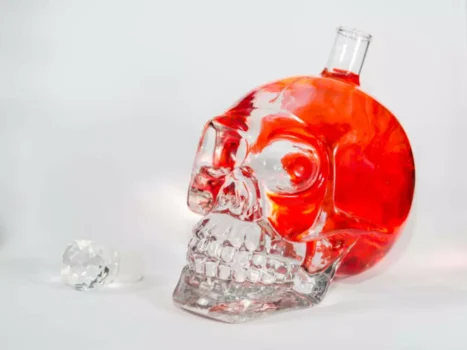
Alcoholism damages the body in many different ways, and it can have a severe impact on a person’s long-term health. Many people who have an addiction to alcohol may not want to attend treatment, though. The best way to help a loved one who is abusing alcohol is to get them into an alcohol treatment center that offers medically supervised detox.
How To Qualify For Inpatient Physical Rehab?
At the preparation stages of alcoholism stage, alcoholics have decided to make a change, and they are planning to take meaningful steps toward recovery in the near future. The helpline at AddictionResource.net is available 24/7 to discuss the treatment needs of yourself or a loved one. This helpline is answered by Treatment X LLC, an addiction treatment provider with treatment facilities in Ohio, Pennsylvania, and California. Hallucinations, tremors, confusion, paranoia, and other signs of alcoholism may occur at this point too, especially if they go too long without drinking. Sometimes, a person with an addiction to alcohol might lose or gain weight when they reach the third stage, too.

Stage 2: The Dependence Stage
At this point, it’s obvious to those close to you that you’re struggling. You might miss work, forget to pick up the kids, become irritable, and notice physical signs of alcohol abuse (facial redness, weight gain or loss, sluggishness, stomach bloating). Support groups can be a highly effective form of help at this stage. As the disease becomes more severe, blackouts and loss of control can happen. And the physical costs of excessive alcohol use become noticeable.
Physical and Mental Health Consequences
It’s also used to describe drinkers who are not addicted or dependent but tend to experience problems involving alcohol. If you are concerned that a loved one has AUD, it may be time to have a conversation. Make it clear that you care about them and are there to offer support. Therapy and 12-step programs like AA are useful tools for managing AUD and staying sober long-term.
Caron Atlanta Outpatient Center
- Despite awareness of the adverse effects, there is a struggle to abstain from alcohol.
- Often termed the ‘prodromal’ phase, this stage is when people start to drink more often, which can lead to some dangerous consequences.
- Alcoholism is a disease that slowly develops over time, not all at once.
This is a dangerous stage where the user https://ecosoberhouse.com/ can easily drink too much at any given point due to their high tolerance, or get behind the wheel when they shouldn’t. Physical symptoms may include increased blood pressure or heart rate, heart palpitations, vomiting, tremors or shakes (DTs), and, in severe cases, hyperthermia and hallucinations. Blacking out from drinking too much is a warning sign of this stage, along with lying about drinking, drinking excessively, and thinking obsessively about drinking. This is especially true for teens who attend parties where drinking is the primary activity. You might think binge drinking is safe when you only do it occasionally, but that couldn’t be further from the truth.

They may also develop a tolerance, requiring higher amounts of alcohol to achieve the desired effects. Being aware of these risk factors can prompt individuals to take proactive measures to heroin addiction reduce their alcohol consumption or seek professional help if needed. The person may now secretly recognize there is a drinking problem, and others may begin to notice as well. Unfortunately, the alcoholic no longer can judge how much alcohol his/her body can handle. Typically, the drinker denies to himself and others that alcohol is a problem so he won’t have to deal with his inner turmoil.

Physical symptoms such as nausea, sweating and tremors may become apparent, especially if you haven’t had a drink. It’s common at this point for alcoholics to have lost their jobs as well their friends and family. The mental and physical health of alcoholics are rapidly deteriorating at this stage, and unless they seek alcohol rehab, they may drink themselves to death. But some people who drink face a risk of developing this chronic and progressive disease, which affects roughly 1 in every 8 Americans and contributes to about 88,000 deaths annually. At this stage, drinking becomes everything in your life, even at the expense of your livelihood, your health and your relationships.
What Are the Different Stages of Alcoholism?
Alcohol use disorder is a chronic brain disease in which a person loses the ability to stop or control alcohol use despite negative consequences. With chronic alcohol misuse, changes occur in the brain that worsen the AUD and the likelihood of relapse. People in end-stage alcoholism may also display dramatic changes in behavior, strained personal relationships, and an inability to maintain employment or daily responsibilities.
How do you tell the difference between the stages of alcoholism?

It is important to think about how alcohol misuse may or may not be affecting all aspects of your life, and whether there are serious consequences for your alcohol use. Problematic alcohol use could be any alcohol use that causes or worsens problems in a person’s life. It may be diagnosable as a moderate alcohol use disorder; the DSM-5 defines moderate AUD as having four to five of the eleven symptoms listed.
Stage 3: Problem Drinking
Contemplation can be an uncomfortable process, and feelings of guilt, shame, hopelessness and desperation are common as people reach this crossroads in their addiction journey. Doing a cost-benefit analysis to weigh the benefits of alcohol use against the cons and costs can sometimes help a person find clarity at this stage. Individuals may waffle back and forth between wanting and not wanting to change. They may decide, for instance, that they’re going to seek treatment sometime in the next six months but won’t set a definite date.
























Comments